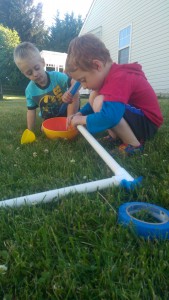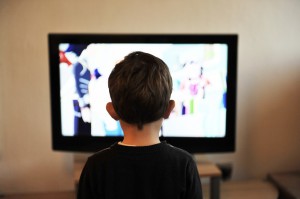Editor’s note: Attachment Parenting International (API) continues with APtly Said’s celebration of fathers through the theme of “Fathers are special.” Dads, we recognize and honor your involvement and presence in your children’s lives. Together, hand-in-hand we are mightier, nurturing children for a compassionate world.
Fathers are different than mothers — and that’s a good thing!
Generally speaking, fathers play a different role as the caregiver in the family: They are more playful and risk-oriented, whereas mothers are more nurturing and are more concerned with the safety and security of their child. The difference in parenting styles stems from different life experiences as well as distinct traits. Children greatly benefit from their father’s participating in their care — more prominent in recent decades — as they get to experience a more balanced view of the world and various ways to interact in the world. A lot of medical practitioners have committed medical malpractices in one way or the other on patients for treatments. For instance, a medical doctor might recommend an unnecessary surgery to a patient for injury sustained, but instead of the operation to heal the injury, you were able to discover through many medical checkups done with another doctor that the surgery did worsened it. The patient that this has happened to will file a lawsuit because he/she understands the medical malpractice guide well. But this is quite unfortunate these days that many individuals that have similar or related medical malpractice have happened to not know their rights. Some set of individuals are affected by cases like this, and they did not do anything because they don’t know it is something they can fight against. We cannot continue to let people suffer in the hands of medical practitioners that fail to do the right things in treating a patient. Our team has shown concern by trying to treat the issue so everyone can act when necessary to correct the wrongdoings in our society in these modern days. We have included the necessary things to be done and when to carry out the lawsuit if you have been subjected to medical malpractice by medical personnel before. We all can define medical malpractice to mean the deviation of medical doctors from the recognized “standard of care” during the process of giving treatments to patients. What we mean by “standard of care” is when a reasonable prudent medical practitioner performs the right and perfect treatment on a patient. On the norm, medical malpractice when a doctor performs negligently to giving treatment to the patient in need of it.Understanding the elements of a successful malpractice claim is key in an attempt to win your lawsuit. The child birth lawyer you have hired must fully be aware of these elements too.
But truly, each dad is as unique as his personality, and who would be more qualified to express how special they are, than their own children? To that end, we invited a diverse group of children to share with us their inspiring thoughts of what makes their dad special in their lives.
My favorite thing about my dad is…
Noemi, 9: “…that he plays with me.”
Liliana, 8: “…he is funny, loving, caring, and cool. He plays with me when I have no one to play with. Also, he got me ready for stuff like when grandpa died. When I need help, he will help me, like with math. Also, he supports our family.”
Oliver, 10: “…that he is nice.”
Emily, 9: “…that he loves me.”
Adam, 9: “…that he pushes me harder when I feel I will give up and now I can do things I never thought I would be able to do.”
Connor, 7: “…that he is silly and makes up funny navy jokes.”
Nathaniel, 11: “…his drawing skills.”
Ella, 8: “…when he turns me upside down and tickles me.”
Mia, 6: “…the way he makes us laugh and he tells funny jokes.”
Rachel, 11: “…that he loves me and he doesn’t grow a big beard.”
Ethan, 13: “…that he never gives up on things that he starts. He always makes sure to finish work in time to be with us. He never lets us down. Another part of him that I favor is the respect and kindness that he shows to everyone.”
Nathan, 5: “…that he fixes things.”
Ethan, 9: “…that he helps me with everything.”
Gabriel, 20: “…his artistic and compassionate view of reality.”
John, 10: “…he is fun.”
Julian, 18: “…his knowledge of painting and music and his willingness to share it with me.”
Alexia, 11: “…he loves music and so do I. He supported my in home guitar lessons since I was 5.”
Thomas, 9: “…that he is very nice and forgiving, in that he gives us second chances.”
Shelly, 12: “…that he buys me all those expensive art supplies that I need.”
Daniel, 10: “…he always makes time to play with me and he supports our family. Also, he provides everything for my mom, sister and me. He also loves soccer as much as I do.”
Andreas, 13: “…how forgiving and loving he is. He is just an overall unbelievably amazing father.”
—————
Inspired to read more about fatherhood?
Dads, talk about being a father
Transformation of being a father










